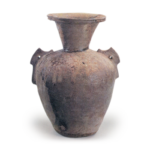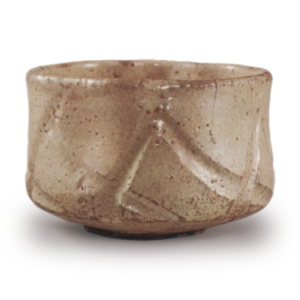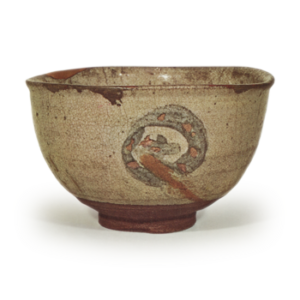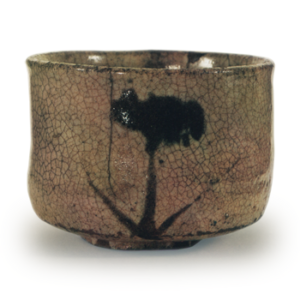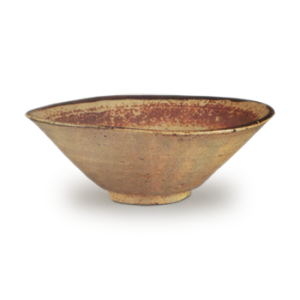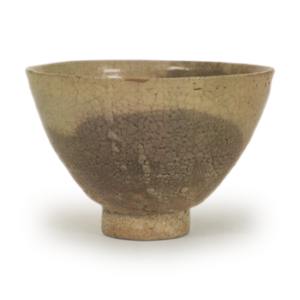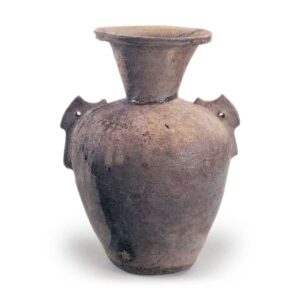
Excavated at Kosohara, Miyazaki-mura, Fukui. 11th century.
Height 27.8cm, mouth diameter 13.3cm, body diameter 18.0cm, bottom diameter 9.8cm.
Vases with two ears on their shoulders, usually called “twin-eared vases,” were fired as Sue ware and ash-glazed ceramics in various parts of Japan. Early twin-eared vases dating from the latter half of the 8th century usually had ring-shaped ears and a ring on the lower half of the body, but from the 9th century onward, flattened ears were used and local color became apparent.
The ears of Hokuriku region twin-ear vases are based on long-necked vases, but they are very distinctive, with the top and bottom sides cut off with a “kaku” (a kind of “tooth”), and from the 10th century onward, the ears gradually became longer, with various types of gouges to create a strong decorative effect. This is one of the few complete Echizen twin-eared vases made of dense clay and fired very well, with a natural yellowish brown glaze covering the shoulder and part of the lower half of the body.

